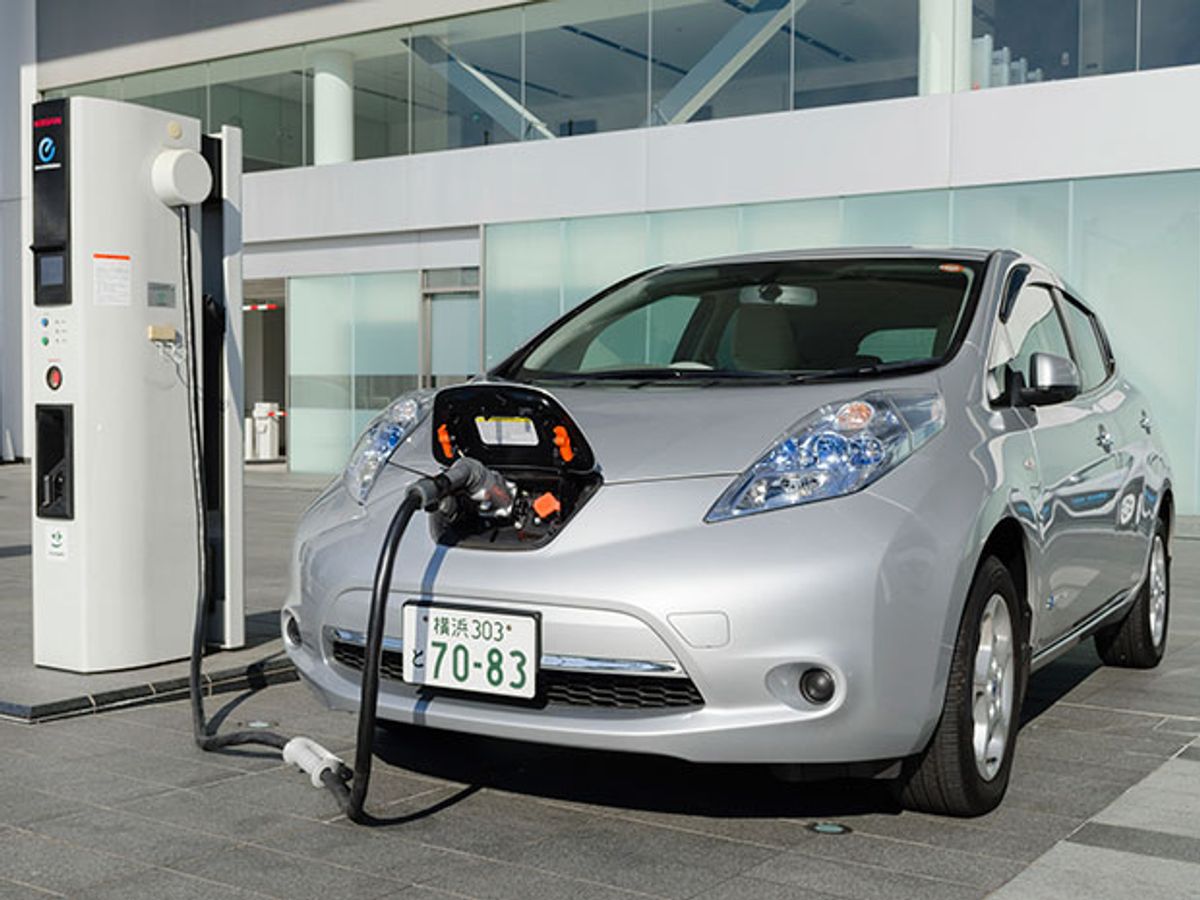A nagging problem with electric vehicles is range anxiety: the creeping suspicion that you might not make it to the garage before your batteries die.
Now a study published in Nature Energy concludes that most people rarely go farther than a single charge allows and that a significant minority practically never do. That opens up a big segment of the car market—and that’s just with today’s batteries. Tomorrow’s will be far more capacious.
Jessika E. Trancik and colleagues at the Santa Fe institute and MIT modeled driving behavior in a new way, by collating databases. From the National Household Travel Survey they obtained information on a large number of trips by all sorts of cars, not just EVs. To characterize the second-by-second velocity of each kind of trip, they referred to a set of GPS-based measurements. Finally, to account for energy consumed in heating and cooling, they factored in a historical database of local weather conditions. This gave them a range of probabilities for the distance traveled and the battery capacity used.
Taking the Nissan Leaf as their exemplar of an affordable electric car, the researchers found 119 kilometers (74 miles) to be the median range—“the distance for which half of all vehicle-days could be covered on one charge.” They found that 87 percent of the cars would have made it through any given day without draining 80 percent of the charge—the point at which battery life is shortened. That success rate would rise to 98 percent, the researchers predict, if the Leaf were to increase its usable battery capacity to 55 kilowatt-hours from today’s 24 kWh. Such an increase—accompanied by a halving of the cost per kWh—is expected to take place by around 2022, according to [PDF] the International Energy Agency.
Just being able to make predictions of this sort is one of the most significant results of the research, writes Willett Kempton of the University of Delaware, in a commentary appearing in the same issue of Nature Energy. He also cites a 2011 study he co-authored that divided people into groups based on driving patterns to estimate how many would stay within range not merely on a given day but on every day of the year. He combines the older and newer studies and concludes that “Current EVs can totally satisfy one-quarter of drivers’ needs for every single trip that group takes during the year. One-quarter may be a minority, but it is a huge market segment.”
One caveat: there will still be drivers who need a whole lot of range. Professional drivers are one example, rural residents another. But even in such cases, a two-car household might handle the problem by pairing an EV with a gasoline-powered backup. Or they could just buy a plug-in hybrid like the Chevrolet Volt, which is essentially an EV with a range-extending gasoline engine attached.
Of course, range is not the only drawback EVs must overcome. There is also the cost-performance tradeoff: affordable cars don’t perform very well, and performance monsters—like the Tesla Model X P90D, with its neck-threatening acceleration—are priced in the six figures. But as batteries get better and cheaper, this problem too may pass.
Philip E. Ross is a senior editor at IEEE Spectrum. His interests include transportation, energy storage, AI, and the economic aspects of technology. He has a master's degree in international affairs from Columbia University and another, in journalism, from the University of Michigan.



